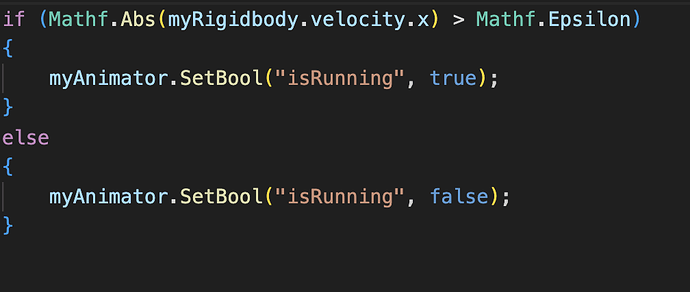I really try understand this code but am still unsure.
Mathf.Abs = absolute value = positive. (from -1 do 1)
Mathf.Epsilon = minimum value close to zero = positive value.
so if my (absolute) rigidbody.velocity.x = positive (probably 1) > 0.0000000001 = its true = running
else (rigidbody.velocity.x( = 0) > 000000000.1) = its false = stop running
If my player going to the left = -x (absolute = +x) = running because absolute do from -x (+x)
Can somebody tell me if i understand this code or concept correctly ?



